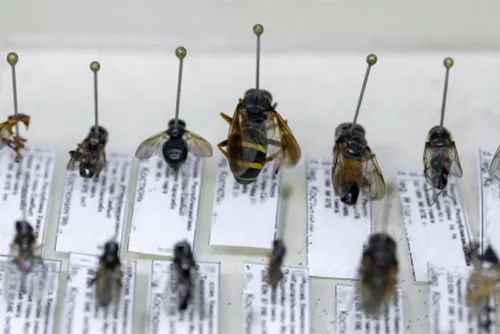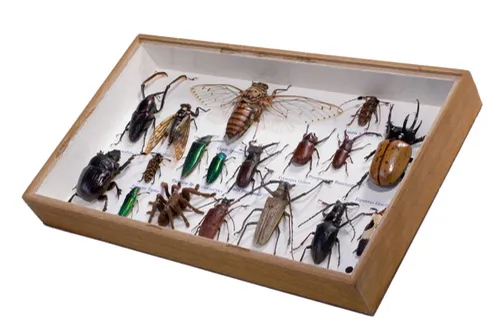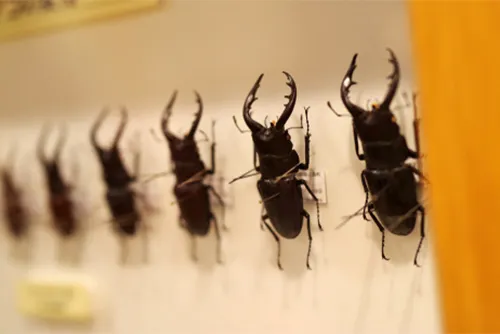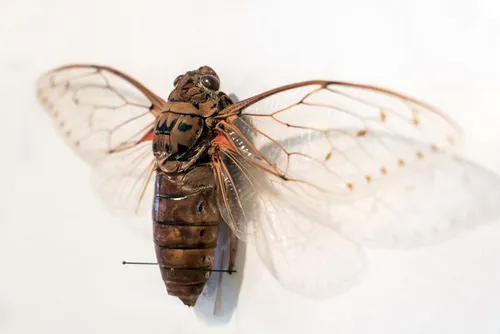ARTHROPODS OF FLORIDA AND NEIGHBORING LAND AREAS
The Arthropods of Florida and Neighboring Land Areas was the first larger publication series for the Division of Plant Industry (previously State Plant Board) and Florida State Collection of Arthropods (FSCA). It emphasized manuscripts on taxonomy, ecology, biology, and zoogeography of arthropods, that were limited to Florida, southern US and the Caribbean. A second series, the Occasional Papers of the FSCA, was established to publish similar works as well as revisionary research that are not geographically limited. With many years of irregular releases where the two competed for manuscripts, followed by a decade of no publications in either, it was decided to discontinue the restrictive Arthropods of Florida series and have all larger publications placed in the Occasional Papers of the FSCA series.




This summary of the beetle fauna of Cuba lists 87 families, 954 genera, and 2,673 species plus three families, three genera, and three species of strepsipterans. Many families in Cuba are poorly or not at all studied and additional species will be found. The fauna contains 1,495 endemic species – species which are naturally limited to Cuba. There are 1,092 native species – these have natural distributions in adjacent or surrounding land masses (the Bahama Islands, Florida and the southeastern United States, Jamaica, the Cayman Islands, México and Central America, and Hispaniola and other Caribbean islands to the east.
The Lepidoptera of Florida are cataloged, totalling 2,941 species, later to be diagnosed and illustrated in the planned 10 part series. This first part includes a general introduction to the Lepidoptera, including the general morphology of Lepidoptera families and keys for their identification, and sections on Florida ecosystems and environment as this relates to the Florida Lepidoptera fauna and its biology. The main text of this first part on Florida Lepidoptera involves a catalog of all verified resident species of moths and butterflies and regular visitor species, excluding erroneous records and rare strays. The catalog is an altered revision of Kimball’s (1965) checklist, which was Volume 1 of the Arthropods of Florida and Neighboring Land Areas series.
The Arthropods of Florida series has now progressed through 30 years, since the inaugural publication of the series in 1965 with the catalog of Florida Lepidoptera. It is perhaps fitting that the beginning of the next period of years should be a catalog/checklist of beetles for Florida. Together, the two catalogs form a large portion of the insect diversity in the state. The beetles in Florida are among the more diverse of the beetle faunas in North America, particularly with the many tropical species entering south Florida from the West Indies, although this fauna is rather depauperate compared to the true tropics. The total beetle fauna for Florida now totals 4,646 species, as cataloged in this work. The authors note that 560 of these species are endemic to Florida. The current beetle total for Florida is a much larger figure than the 1,487 species listed in the first checklist for the state in 1878.
The Florida species of the cucujoid families Silvanidae, Passandridae, and Laemophloeidae are reviewed. Keys and illustrations for all Florida genera and species and diagnoses and detailed distribution records for all noneconomic species in the state are provided. A key to the genera of the United States is also provided, as is a checklist of species. There are 14 genera and 33 species of Silvanidae in the United States, 1 I genera and 22 species of which occur in Florida. Of the two U.S. genera and four species of Cucujidae, none occurs in Florida. Two genera and two species of Passandridae occur in the U.S., including Florida. The Laemophloeidae are represented by 14 genera and 53 species in the U.S., of which 11 genera and 31 species are recorded from Florida.